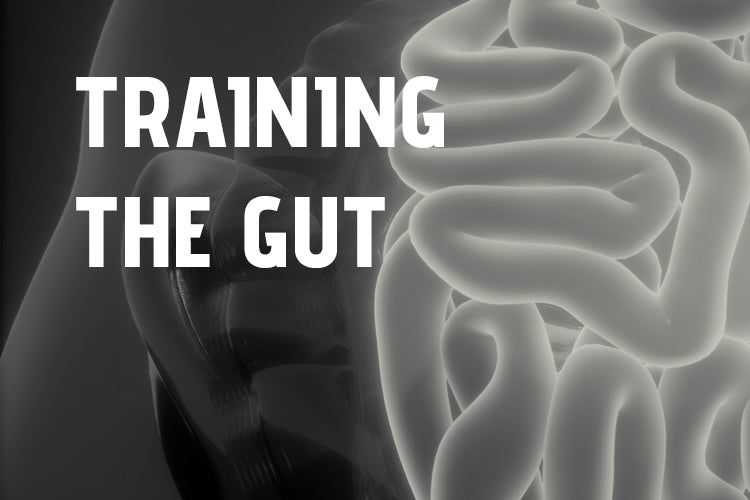Athletes often underestimate the importance of the gastrointestinal (GI) tract. Providing exogenous sources of fluid and carbohydrates can be critical for performance, especially during prolonged exercise (1) . Furthermore, gastrointestinal symptoms such as bloating, cramping, diarrhea, and vomiting are common in many sports, especially endurance sports (2) .
Without a well-functioning GI system, nutrient delivery will be impaired and a variety of GI symptoms may develop. Clearly, the intestinal tract is highly adaptable, and it has been suggested that specific training of the intestinal tract may improve nutrient delivery during exercise while simultaneously alleviating some (or all) of the symptoms (3) . This training, sometimes referred to as “gut training,” has received relatively little attention in the literature, and to my knowledge, there are no review articles devoted to this topic.
What is it? Why?
Within the term Nutritional Training, we find different methods to optimize athletic performance, such as Nutrient Periodization, as previously discussed . Training the gut, or stomach training, is a process of adapting the Digestive System.
It seeks to train and/or accustom the stomach and small intestine to tolerate larger volumes of fluids and amounts of food ingested during exercise, as well as to obtain adaptations in transport and use of substrates.
It seeks to improve athletes' behavioral habits regarding food intake during exercise , to optimize recovery , minimize the risk of injury, internal and metabolic load, and improve anxiety, satiety, and control of extra-workout intake.
The ultimate goal, therefore, is to minimize associated gastrointestinal problems and optimize, in each situation, the transport of the different nutrients ingested, as well as their use and performance.
Why do Stomach and Bowel Training?
High-intensity, long-duration exercise and its potential factors (mechanical impact, metabolic stress, dehydration, electrolyte imbalance, etc.) limit the proper functioning of the Digestive System.
Carbohydrate intake and hydration are key to optimizing medium- and long-term performance. Proper intake patterns and habits during exercise improve athletes' performance, recovery, and long-term health.
Minimizing exercise limitations and optimizing your possibilities (eating and drinking more, always based on specific demands) is a fundamental part of athletic success, and this is where this training comes in.
Objective: To ingest the maximum amount of carbohydrates during exercise to achieve greater oxidation of these carbohydrates and allow the athlete to run the race at a higher intensity than expected.
As?

Phases and explanation:
Phase 1: With virtually no intervention during the workout, this consists of increasing the amount of carbohydrates in pre-workout meals, accompanied by a certain amount (500-1000 ml) of liquid. We do this so that the athlete exercises with greater volumes of liquid and food in their stomach , which will help improve their stomach tolerance and comfort.
Phase 2: This involves starting to eat during exercise (a habit) to increase gastric volume throughout the entire workout. To achieve this, choose foods that are "complex" to digest, such as fruits with skin and certain foods rich in fructose (fruit sweets), ensuring a minimum carbohydrate intake of 40-45g/h, along with a moderate amount of fluid: 300-400 ml/h of isotonic drink.
The first two phases are the most basic. They start from a very basic point, that is, an athlete who eats and drinks very little during sports, a person who follows a chronic low-carb diet, or an athlete who has a specific intestinal condition (ulcerative colitis, for example).
Both phases can be combined (performed at the same time), depending on the athlete's starting point. As a general rule, a two-week period, at a rate of three workouts per week, is recommended to progress from phase to phase.
Phase 3: This consists of starting the exercise regimen with foods more appropriate for this purpose. Therefore, more digestible foods composed of simple sugars (see table) are suggested, in an approximate amount of 45-60g carbohydrate/h. In addition, a minimum amount of fluid should be ensured, with an appropriate amount being 500ml/h with its corresponding electrolytes.
Phase 4: The next step is to optimize the amount of intake during exercise (reaching 90gHC/h). To do this, we must combine sugars that are absorbed with different intestinal transporters (maltodextrin:fructose) in an adequate ratio of 2:1 or 1:0.8 . We should look for sports foods that meet this requirement (gels) , homemade foods based on sugar and fruit (quince, sweet potato jam, etc.) and/or drinks with this composition . With the same amount of fluid as in Phase 3, we ensure adequate hydration so that our digestive system can withstand this training.
Phase 5: We're now at a higher level. In this phase, it's assumed that if your body is already capable of assimilating high amounts of carbohydrates (like the ones mentioned above), you're ready to seek out the optimal quality and quantity (the maximum tolerable amount for each individual). We set this amount at around 120g of carbohydrates/h (although it should be personalized), as we've seen that such quantities can be tolerated without any problems, while also significantly improving performance and recovery. (4)
Phase 6: In this final phase, we reach the next level. The goal is to thoroughly train our race strategy. To do this, we must plan and prepare this strategy and test it at least twice in competition simulator training sessions. We can also customize our hydration regimen to ensure an adequate schedule based on our needs. At this point, you should have the foods, the combination of different sugars, beverages, intake protocols, and other details tested and measured down to the last detail to optimize your athletic performance. In other words, everything you'll be bringing to the competition.


Look at the images. The intensity graph is described in the simplest and most understandable way possible. The three main intensity zones with respect to blood lactate concentration. We could say they represent the three metabolic zones, always keeping in mind that metabolic pathways don't function independently and in a square manner, but rather complement each other through the so-called "continuum energeticum." (image on the left)
In it we wanted to represent, in red, the zone of intensity higher than the supposed Ventilatory Threshold 2 (VT2), from which the use of glycolysis becomes more and more important in obtaining energy.
Furthermore, due to increased blood redistribution, greater impact, and, generally, mild dehydration, gastrointestinal problems also increase at this intensity. We then find ourselves at a critical point where the need for and expenditure of glucose increases exponentially, while the difficulties in digesting and absorbing sugars also increase.
Therefore, this "training of the gut" will help us avoid these problems at all costs and become increasingly more efficient.
Two examples of possible workouts where "Training the gut" would be appropriate:


Long interval training on a bike: Typical training at an intensity around UL2 with 20-minute intervals. For example, 4 x 20 minutes on a mountain pass.
Medium interval running training : Another classic, a mile-long workout on the athletics track. For example, 10 x 1000 meters at an intensity higher than your 10 km best (higher than LT2 or VT2).
Training that simulates a competition or race. This is especially important to understand how the digestive system behaves during key and most demanding efforts, and to also test all the products selected for day X.
Physiological Effects
This training allows us to better tolerate the volumes of food and fluid in the stomach during sports. In other words, it improves our stomach tolerance and comfort during exercise, especially at high intensities. Keep in mind that as exercise intensity increases, gastrointestinal problems tend to become more prevalent.
It increases gastric emptying speed and volume. That is, what we eat and drink passes through the stomach more quickly and reaches the absorption sites (small intestine) sooner.
With gut training, we increase the sugar transporters in the gut, which translates into greater capacity for sugar transport and oxidation in the corresponding muscle. Furthermore, we can combine this type of training with a high-fructose diet, which increases the rate of oxidation by the GLUT-5 (fructose) transporter.
It also improves the athlete's glycolytic capacity (glucose burning) at high intensities. Why? Because glycolytic metabolism is stimulated to a greater extent, "turning" the athlete into a bigger "burner." You can imagine a gasoline-powered Ferrari compared to a diesel-powered Renault Clio.
Benefits:
Fewer gastrointestinal problems during exercise, which ensures athletic success, as we minimize a major limitation of sports.
Improved performance during higher-intensity training and competitions. If we can get more fuel, without associated problems and more efficiently, we'll also perform better at higher intensities where the demand is almost exclusively for that fuel (glucose).
Better post-training or competition recovery, due to less depletion of muscle glycogen and, therefore, greater savings, allowing the athlete to finish more "whole."
Literature
- Jeukendrup AE. Nutrition and endurance sports: running, cycling, triathlon. J Sports Sci. 2011;29:S91–9.
- Oliveira EP, Burini RC, Jeukendrup A. Gastrointestinal complaints during exercise: prevalence, etiology, and nutritional recommendations. Sports Med. 2014;44:S79–85.
- Jeukendrup AE, McLaughlin J. Carbohydrate ingestion during exercise: effects on performance, training adaptations and trainability of the gut. Nestle Nutr Inst Workshop Ser. 2011;69:1–12 discussion 3–7.
- Jeukendrup A. Training the gut. Sports Med. 2016 .
- Cox GR, Clark SA, Amanda J. Cox AJ, Halson SL, Hargreaves M, Hawley JA, Jeacocke N, Snow RJ, Yeo WK, Burke LM. Daily training with high carbohydrate availability increases exogenous carbohydrate oxidation during endurance cycling. Journal of Applied Physiology Published 1 July 2010 Vol. 109 no. 1, 126-134





